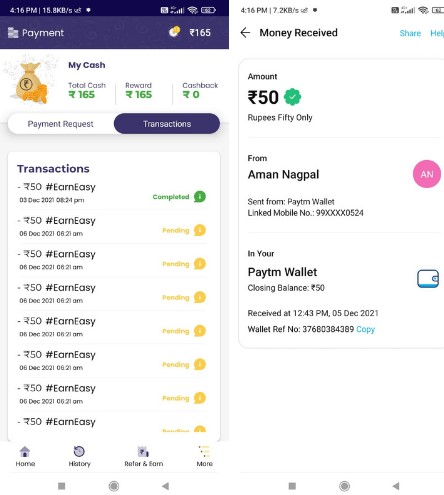RBI to withdraw ₹2,000 notes from circulation; notes can be exchanged, deposited till September 30
RBI to withdraw ₹2,000 notes from circulation; notes can be exchanged, deposited till September 30
Table of Contents

The Reserve Bank of India (RBI) has decided on May 19 to phase out 2,000 rupee notes as part of its clean note policy. However, the ₹2,000 note remains legal tender. Similar banknote withdrawals from circulation occurred in 2013 and 2014.
The decision to withdraw the £2,000 note would also strain the system and disempower the public, recalling the de-monetization era, when banking channels were overwhelmed by large crowds rushing to their branches to exchange notes. likely to bring fear and inconvenience.
The central bank advises citizens to deposit 2,000 ₹2,000 worth of notes in their bank accounts, exchange them for other denominations at branches, or both. “Funding into bank accounts can be done in the usual way, i.e. without restrictions, in accordance with existing instructions and other applicable legal provisions,” the RBI said.
₹2000 Notes Conversion Limit Set By RBI
For operational reasons and to avoid disruption to banks’ normal operations, from 23 May 2023, banknotes worth ₹2,000 can be exchanged for notes of any other denomination up to ₹20,000 each. will be
All banks have been instructed to provide deposit and/or exchange facilities for ₹2,000 banknotes by 30 September 2023 in order to complete the exercises on schedule and allow sufficient time for the public.
RBI has issued separate guidelines for banks.
From 23 May 2023, his RBI’s 19 local offices with ‘issuing departments’ will also be able to exchange banknotes up to a limit of 2,000 ₹ to 20,000 ₹. Banks were instructed to immediately stop issuing 2,000 ₹2,000 notes. “Citizens are encouraged to use the time until 30 September 2023 to deposit and/or redeem ₹2,000 banknotes,” the RBI statement continued.
The ₹2,000 note was introduced in November 2016 and was “quick to meet the currency needs of the economy, primarily following the removal of legal tender status from all £500 and £1,000 notes in circulation at the time.” to respond,” the banking regulator explained.
“The purpose of introducing the £2,000 note was achieved when there was a sufficient supply of notes of other denominations.”
Printing of the 2,000 ₹2,000 banknote was discontinued in 2018/19. According to RBI, around 89% of the 2,000 ₹ bonds were issued before March 2017 and have reached the end of an estimated 4-5 year life.
“The total value of these notes in circulation has decreased from a peak of Rs 6.73 billion [37.3% of the banknotes in circulation] on 31 March 2018 to Rs. At that time it was only 3.62 billion rupees, which is only 10.8% of the banknotes in circulation.There will be banknotes in circulation in 2023,” RBI said.
“It has also been observed that this denomination is not commonly used for trading. In addition, stocks of banknotes of other denominations are still sufficient to meet the people’s demand for cash,” the central bank added.
Karthik Srinivasan, Senior Vice President and Head of Financial Sector Ratings Group at ICRA Ltd. said: This could ease upward pressure on deposit rates and lead to lower short-term interest rates. ”
What you need to know about the ₹2000 note withdrawal
1. Why are ₹2000 denomination banknotes being withdrawn?
The ₹2000 denomination banknote was introduced in November 2016 under Section 24(1) of RBI Act, 1934 primarily with the objective to meet the currency requirement of the economy in an expeditious manner after withdrawal of the legal tender status of all ₹500 and ₹1000 banknotes in circulation at that time. With fulfilment of that objective and availability of banknotes in other denominations in adequate quantities, printing of ₹2000 banknotes was stopped in 2018-19. A majority of the ₹2000 denomination notes were issued prior to March 2017 and are at the end of their estimated life-span of 4-5 years. It has also been observed that this denomination is not commonly used for transactions. Further, the stock of banknotes in other denominations continue to be adequate to meet the currency requirement of the public. In view of the above, and in pursuance of the “Clean Note Policy” of the Reserve Bank of India, it has been decided to withdraw the ₹2000 denomination banknotes from circulation.
2. What is Clean Note Policy?
It is a policy adopted by RBI to ensure availability of good quality banknotes to the members of public.
3. Does the legal tender status of ₹2000 banknotes remain?
Yes. The ₹2000 banknote will continue to maintain its legal tender status.
4. Can ₹2000 banknotes be used for normal transactions?
Yes. Members of the public can continue to use ₹2000 banknotes for their transactions and also receive them in payment. However, they are encouraged to deposit and/or exchange these banknotes on or before September 30, 2023.
5. What should the public do with the ₹2000 denomination banknotes held by them?
Members of the public may approach bank branches for deposit and/or exchange of ₹2000 banknotes held by them. The facility for deposit into accounts and exchange for ₹2000 banknotes will be available at all banks until September 30, 2023. The facility for exchange will be available also at the 19 Regional Offices (ROs) of RBI having Issue Departments ntil September 30, 2023.
6. Is there a limit on deposit of ₹2000 banknotes into a bank account?
Deposit into bank accounts can be made without restrictions subject to compliance with extant Know Your Customer (KYC) norms and other applicable statutory/regulatory requirements.
7. Is there an operational limit on the amount of ₹2000 banknotes that can be exchanged?
Members of the public can exchange ₹2000 banknotes upto to a limit of ₹20,000/- at a time.
8. Can ₹2000 banknotes be exchanged through Business Correspondents (BCs)?
Yes, exchange of ₹2000 banknotes can be made through BCs upto a limit of ₹4000/- per day for an account holder.
9. From which date will the exchange facility be available?
To give time to the banks to make preparatory arrangements, members of the public are requested to approach the bank branches or ROs of RBI from May 23, 2023 for availing exchange facility.
10. Is it necessary to be a customer of the bank to exchange ₹2000 banknotes from its branches?
No. A non-account holder also can exchange ₹2000 banknotes up to a limit of ₹20,000/- at a time at any bank branch.
11. What if someone needs more than ₹20,000/- cash for business or other purposes?
Deposit into accounts can be made without restrictions. The ₹2000 banknotes can be deposited into bank accounts and cash requirements can be drawn thereafter, against these deposits. Ahmedabad, Bangalore, Belapur, Bhopal, Bhubaneswar, Chandigarh, Chennai, Guwahati, Hyderabad, Jaipur, Jammu, Kanpur, Kolkata, Lucknow, Mumbai, Nagpur, New Delhi, Patna and Thiruvananthapuram
12. Is there any fee to be paid for the exchange facility?
No. The exchange facility shall be provided free of cost.
13. Will there be special arrangements for senior citizens, persons with disabilities, etc. for exchange and deposit?
Banks have been instructed to make arrangements to reduce inconvenience to the senior citizens, persons with disabilities, etc., seeking to exchange/deposit ₹2000 banknotes.
14. What will happen if one cannot deposit / exchange ₹2000 banknote immediately?
To make the entire process smooth and convenient for the public, a period of over four months has been given for deposit and/or exchange of ₹2000 banknotes. Members of the public, are therefore, encouraged to avail this facility at their convenience within the allotted time.
15. What will happen if a bank refuses to exchange / accept deposit of ₹2000 banknote?
For redress of grievance in case of deficiency of service, the complainant/aggrieved customer may first approach the concerned bank. If the bank does not respond within a period of 30 days after lodging of the complaint or if the complainant is not satisfied with the response/resolution given by the bank, the complainant can lodge the complaint under the Reserve Bank – Integrated Ombudsman Scheme (RB-IOS), 2021 at the Complaint Management System portal of RBI (cms.rbi.org.in).





